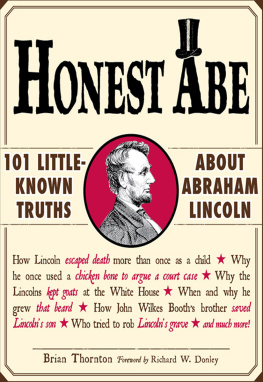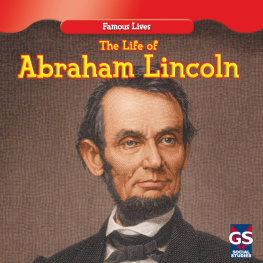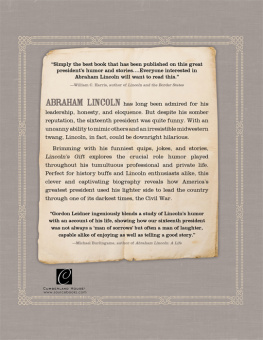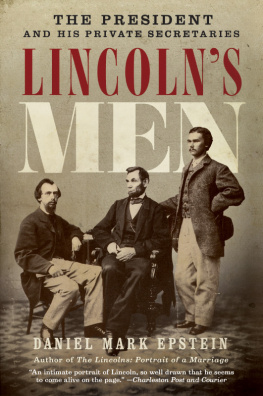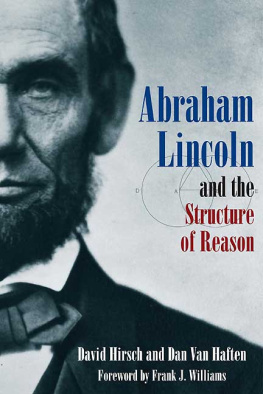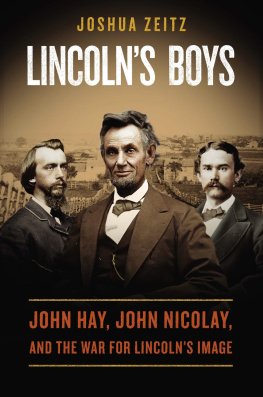
Alexander Gardners February 5, 1865, portrait brings out Lincolns lined and leathery visage.
Mr. Lincolns face was so mobile, so sure a reflex of his mood, and his temper had so wide a range, that it is not to be wondered at [that] the portraits [of him] differ so... [People] will choose from the multitude of photographs the one that best answers the notion they have formed of the man.
For ourselves, we cannot separate Mr. Lincoln in our minds from the time in which he lived, nor think of him except as a man who, having mental and spiritual organization of extreme delicacy and sensitiveness, was called to bear a load of care, responsibility, and anxiety, that must have left a deep and indelible mark upon his face... time left all [its] bitter dealings with him written on that scarred and weather-beaten visage. And this record the true portrait of Mr. Lincoln must have, or miss the final verdict of acceptance. People do not want a nice portrait, nor a handsome portrait, nor an ideal portrait. They want to say, this is the man who suffered and died in our cause. Let flatterers stand aside, and squeamish people. Show us the grim features, the shaggy head, the beetling brow, the big nose, the great mouth. What do we care for his homeliness? His soul transfigures this scarred and craggy face as sunset strikes against a mountain side, and changes rugged cliff, and black ravine, and darkest wood into golden or rosy cloud.
FINE ARTS, NEW YORK TRIBUNE, DEC. 28, 1866

This retouched print of Gardners February 5, 1865, image offers an idealized man for the ages.

To Jonah, Oliver, Cornelia, Roscoe, and Jim and their parents Christopher and Laura, Rachel and Christophe
Contents
I had this image of Lincoln, the living president, haunting his own White House, just taking strolls up and down the long, wide corridors of the residence... just working things out. That was one of the first images I had.
STEVEN SPIELBERG, JANUARY 5, 2013
D EAD FOR A CENTURY and a half, Abraham Lincoln remains curiously and uniquely alive to millions of Americans. Many presidents are remembered and admired. Lincoln is cherished and lovedmore deeply, by more peoplethan any other. He endures as the model leader other presidents are judged by. For some he persists as a moral exemplar, a man of saintly disposition unable to hold a grudge or hate an enemy.
A decade ago, in her engaging Team of Rivals: The Political Genius of Abraham Lincoln (2005), Doris Kearns Goodwin expressed a warm attachment to him as the gold standard of American presidents. Her 750-page study of his person and his politics beguiled readers across the country. By 2012, it had sold 1.3 million physical copies, ten times more than the total sale of David Donalds classic biography Lincoln (1995).
Political insiders couldnt resist Team of Rivals. During the 2008 presidential campaign, the political elite in Washington took the book as totemic. Barack Obama was a brand-new senator from Illinois when he read it in 2005. He gave Goodwin a call at her home in Massachusetts and said, We need to talk. She got on a plane and met him in the Senate
Over her three decades of historical writing, Goodwin wrote in her introduction, she had come to know the lives of Franklin Roosevelt, the Kennedys, and Lyndon Johnson (in her twenties, she had actually worked for LBJ). After spending a decade living and breathing Abraham Lincoln, she saw that he surpassed all the others in his power to captivate the imagination and to inspire emotion. He had drawn her in with his humor, intelligence, fortitude, and self-deprecating composure.
Goodwins contagious enthusiasm for Lincoln rubbed off on Steven Spielberg. In 1999, after running into Goodwin at a conference on the impending millennium, he asked her what she was writing about. He knew shed won the Pulitzer Prize in 1995 for No Ordinary Time, a study of Franklin and Eleanor Roosevelt during World War II. When she uttered the name Lincoln, he salivated. He hadnt been looking to make a film on Lincoln, but hed been fascinated by the sixteenth president since boyhood. Would she consider selling him the movie rights, he asked, even though her book was years away from publication? She was thrilled by the offer, and they shook on it.
A few years later, their partnership doubled into a star-studded four-member team of literary and cinematic artists. Screenwriter Tony Kushner came aboard through the combined persuasion of Spielberg and Goodwin, and actor Daniel Day-Lewis finally signed on after reading a draft of Kushners script. In 2012, most critics and ticket buyers found their depiction of the president riveting. Without Goodwin the historianthe creator, in Team of Rivals, of a gripping story and a carefully chiseled verbal monument to her herothe movie never would have happened.
Lincoln built upon earlier films (Tony Kushner has expressed special fondness for John Fords Young Mr. Lincoln), but Lincoln is the first one to deliver a fully embodied presidential Lincoln: politician, chief magistrate, commander in chief, father, and husband whose physical frame carried the load of war and stood in life and death as symbol of the undivided Republic. Spielberg registered the pace and power of that frame in his first brainstorm about what the camera should record: a solitary Lincoln ambling down a White House hallway, silently pondering the nations fate.

LONG BEFORE the assassination, and even before his presidency, many Americans had taken Lincolns towering, shambling physique as a symbol of republican simplicity and American self-making. Thanks to photography and other visual arts, his body exerted huge symbolic force during the Civil War. But with his sudden metamorphosis into the nations martyr in chief in the spring of 1865, his capacity to evoke love and gratitude expanded exponentially. The mythic potency already contained in his living frame was magnified beyond measure in his bruised and rigid corpse.
In the hearts and minds of African Americans and northern whites, Lincolns body was no longer just a symbol. It was an actual physical bestowal, one that metamorphosed, in the decades to come, into a virtual embodiment of national purpose and glorystill a symbol, but for many people more charged and real than other icons. Uncle Sam was a symbol standing for the nation. Lincoln was a man dying for the nation.
Ever since May 4, 1865, Americans have vied with one another to exploit Lincolns symbolic power. For a century after his death, African Americans did the most to preserve a continuous memory of Lincoln the emancipator, and they did so by treasuring what they took as the providential meaning of his martyrdom. He had given his life for the nation, but he had also given it especially for them. Nowadays, after the reelection of the first African American president, differences in the way blacks and whites see Lincoln have been mostly overcome. The image of Lincolns body and face, familiar to all, doesnt carry the same nearly sacred meaning it once did.
In 1947, the young historian David Donald could describe the Lincoln cult as almost an American religion, featuring high priests such as Carl Sandburg and a legion of disciples dedicated to celebrating Lincolns virtues. A measure of that ardor remains, but by the 1970s the image of Lincoln circulated more and more
Next page

